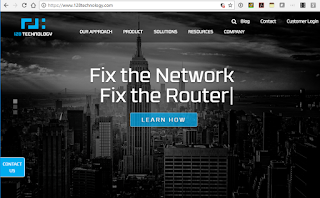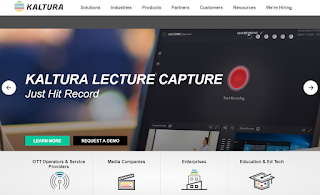A big question that must weigh on the minds of the directors at Ericsson is how soon 5G rollouts will begin. It has been a tough few years at Ericsson in particular, and for many other non-Chinese network equipment vendors in the mobile space as well. Many of the big mobile operators in the developed markets have already completed their 4G LTE network construction. Minor upgrades and fill-in projects continue, but for the most part the big spending campaigns have slowed to a trickle. With mobile penetration rates exceeding 100% in many markets, the networks can only grow by poaching subscribers from local rivals. The good news is that traffic-per-user is surging and the networks gradually are filling up. On the horizon are many innovative apps that promise even heavier network loads, and when standards are fully-baked and new spectrum licenses secured, a healthy upgrade cycle to 5G should begin. In the meantime, there are LTE-A enhancements underway and Gigabit LTE deployments in progress. The big question for Ericsson is: when will 5G begin and how fast will the network upgrades occur?
 The latest edition of the Ericsson Mobility Report has just been released. The company has updated this report on an annual or semi-annual basis for the past five years, providing its mobile operator customers and the market at-large with valuable predictions concerning technology and usage trends.
The latest edition of the Ericsson Mobility Report has just been released. The company has updated this report on an annual or semi-annual basis for the past five years, providing its mobile operator customers and the market at-large with valuable predictions concerning technology and usage trends.
5G is perhaps the starring topic again in this edition of the Mobility Report, with the big finding that by 2022 Ericsson predicts there will be more than half a billion 5G subscriptions, with a population coverage of 15%.
This figure is bolder than what Ericsson has published before. For instance, in June 2014, Ericsson was still expecting a slower uptake for LTE to persist, particularly in Europe. In that forecast from 3 years ago, Ericsson predicted that by the end of 2019, LTE would make up around 50% of the subscriptions base in Western Europe. Of course, in 2014 not everyone had to carry a smartphone. In fact, only 65% of all phones sold in Q1 2014 were smartphones. The 3G network in Europe was well developed, so the Ericsson Mobility Report expected these trends to linger. The current report finds that GSM/EDGE still constitutes the largest category of mobile subscriptions, but that LTE will become the dominant mobile access technology in 2018, and will likely reach 5 billion subscriptions by the end of 2022, or more than seven times the GSM/EDGE-only subscriptions. This will be the final sunset for 3G.
In this year's report, Ericsson calculates that the total traffic in mobile networks increased by 70% between the end of Q1 2016 and the end of Q1 2017 - a huge leap! Incidentally, a big part of the gain is linked to Reliance Jio Infocomm launching its LTE network in India and offering free mobile data on a trial basis. Within six months of launch, Jio reached 100 million broadband and VoLTE customers, making it the fastest growing operator in the world for 2016. But traffic is surging for many other reasons as well.
5G New Radio specs will incentivise early rollouts
Earlier planning anticipated the 5G upgrade cycle to begin in the new decade, sometime after the 2020 Tokyo Olympic Games. At this year’s Mobile World Congress in February, major mobile network operators and vendors issued a call to accelerate the 5G New Radio (NR) standardisation schedule to enable large-scale trials and deployments as early as 2019, a year earlier than the previous expected timeline. In March 2017, 3GPP complied with this request by approving the acceleration of the 5G NR standardisation schedule to include an intermediate milestone for an early variant called Non-Standalone 5G NR.
Key findings
To follow are some interesting highlights on network evolution from Ericsson Mobility Report:
• Ericsson anticipates that by the end of 2022 there will be 9 billion mobile subscriptions. Mobile broadband subscriptions will reach 8.3 billion, thereby accounting for more than 90% of all mobile subscriptions. The number of unique mobile subscribers is estimated to reach 6.2 billion by the end of 2022.
• There are more than 1 million new mobile broadband subscribers every day.
• LTE subscriptions reached a total of 2.1 billion in Q1 2017, up by 250 million new subscriptions during the quarter.
• Operators are evolving their existing LTE networks to LTE-Advanced (LTE-A) networks with Category1, 4, 6, 9, 11 and 16 implementations, combining lower and higher frequency bands (both for FDD and TDD modes).
• There are currently 591 commercial LTE networks deployed in 189 countries. Out of these, 194 have been upgraded to LTE-A networks.
• Ericsson anticipates that the number of VoLTE subscriptions will reach 4.6 billion by the end of 2022, making up more than 90% of all LTE subscriptions globally.
• The upgrade to LTE occurred significantly faster than the upgrade from 2G to 3G. In just 5 years, LTE was adopted by 2.5 billion users; it took eight years for 3G to reach this milestone.
• Ericsson now expects some large-scale trials early commercial deployment of 5G in 2019 that will use the 5G NR specs.
• The adoption rate of 5G mobile broadband is expected to be similar to that of LTE, with rollouts commencing in major metro areas.
• Ericsson now expects North America to take a leading role in 5G rollouts as the major U.S. operators have each stated their intention to expand into pre-standard 5G. By 2022, Ericsson predicts that 25% of North American subscribers could be on 5G.
• The first commercial use of 5G is expected to be for enhanced mobile broadband and fixed wireless access (FWA).
• 5G radio access lowers round trip latency to under 4 ms, as seen in a 5G test bed conducted by Scania and Ericsson in Sweden.
• Attributes of 5G, including network slicing and low latency, will make safe public transport using autonomous vehicles a reality.
The full 2017 Ericsson Mobility Report can be downloaded here.
https://www.ericsson.com/en/mobility-report
 The latest edition of the Ericsson Mobility Report has just been released. The company has updated this report on an annual or semi-annual basis for the past five years, providing its mobile operator customers and the market at-large with valuable predictions concerning technology and usage trends.
The latest edition of the Ericsson Mobility Report has just been released. The company has updated this report on an annual or semi-annual basis for the past five years, providing its mobile operator customers and the market at-large with valuable predictions concerning technology and usage trends.5G is perhaps the starring topic again in this edition of the Mobility Report, with the big finding that by 2022 Ericsson predicts there will be more than half a billion 5G subscriptions, with a population coverage of 15%.
This figure is bolder than what Ericsson has published before. For instance, in June 2014, Ericsson was still expecting a slower uptake for LTE to persist, particularly in Europe. In that forecast from 3 years ago, Ericsson predicted that by the end of 2019, LTE would make up around 50% of the subscriptions base in Western Europe. Of course, in 2014 not everyone had to carry a smartphone. In fact, only 65% of all phones sold in Q1 2014 were smartphones. The 3G network in Europe was well developed, so the Ericsson Mobility Report expected these trends to linger. The current report finds that GSM/EDGE still constitutes the largest category of mobile subscriptions, but that LTE will become the dominant mobile access technology in 2018, and will likely reach 5 billion subscriptions by the end of 2022, or more than seven times the GSM/EDGE-only subscriptions. This will be the final sunset for 3G.
In this year's report, Ericsson calculates that the total traffic in mobile networks increased by 70% between the end of Q1 2016 and the end of Q1 2017 - a huge leap! Incidentally, a big part of the gain is linked to Reliance Jio Infocomm launching its LTE network in India and offering free mobile data on a trial basis. Within six months of launch, Jio reached 100 million broadband and VoLTE customers, making it the fastest growing operator in the world for 2016. But traffic is surging for many other reasons as well.
5G New Radio specs will incentivise early rollouts
Earlier planning anticipated the 5G upgrade cycle to begin in the new decade, sometime after the 2020 Tokyo Olympic Games. At this year’s Mobile World Congress in February, major mobile network operators and vendors issued a call to accelerate the 5G New Radio (NR) standardisation schedule to enable large-scale trials and deployments as early as 2019, a year earlier than the previous expected timeline. In March 2017, 3GPP complied with this request by approving the acceleration of the 5G NR standardisation schedule to include an intermediate milestone for an early variant called Non-Standalone 5G NR.
Key findings
To follow are some interesting highlights on network evolution from Ericsson Mobility Report:
• Ericsson anticipates that by the end of 2022 there will be 9 billion mobile subscriptions. Mobile broadband subscriptions will reach 8.3 billion, thereby accounting for more than 90% of all mobile subscriptions. The number of unique mobile subscribers is estimated to reach 6.2 billion by the end of 2022.
• There are more than 1 million new mobile broadband subscribers every day.
• LTE subscriptions reached a total of 2.1 billion in Q1 2017, up by 250 million new subscriptions during the quarter.
• Operators are evolving their existing LTE networks to LTE-Advanced (LTE-A) networks with Category1, 4, 6, 9, 11 and 16 implementations, combining lower and higher frequency bands (both for FDD and TDD modes).
• There are currently 591 commercial LTE networks deployed in 189 countries. Out of these, 194 have been upgraded to LTE-A networks.
• Ericsson anticipates that the number of VoLTE subscriptions will reach 4.6 billion by the end of 2022, making up more than 90% of all LTE subscriptions globally.
• The upgrade to LTE occurred significantly faster than the upgrade from 2G to 3G. In just 5 years, LTE was adopted by 2.5 billion users; it took eight years for 3G to reach this milestone.
• Ericsson now expects some large-scale trials early commercial deployment of 5G in 2019 that will use the 5G NR specs.
• The adoption rate of 5G mobile broadband is expected to be similar to that of LTE, with rollouts commencing in major metro areas.
• Ericsson now expects North America to take a leading role in 5G rollouts as the major U.S. operators have each stated their intention to expand into pre-standard 5G. By 2022, Ericsson predicts that 25% of North American subscribers could be on 5G.
• The first commercial use of 5G is expected to be for enhanced mobile broadband and fixed wireless access (FWA).
• 5G radio access lowers round trip latency to under 4 ms, as seen in a 5G test bed conducted by Scania and Ericsson in Sweden.
• Attributes of 5G, including network slicing and low latency, will make safe public transport using autonomous vehicles a reality.
The full 2017 Ericsson Mobility Report can be downloaded here.
https://www.ericsson.com/en/mobility-report















